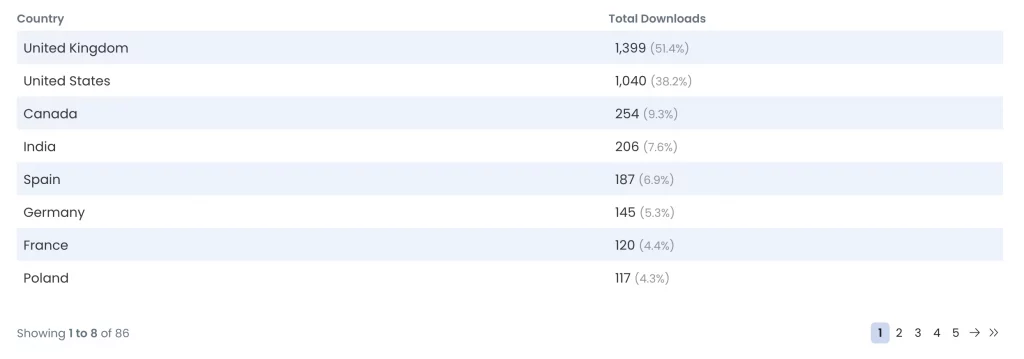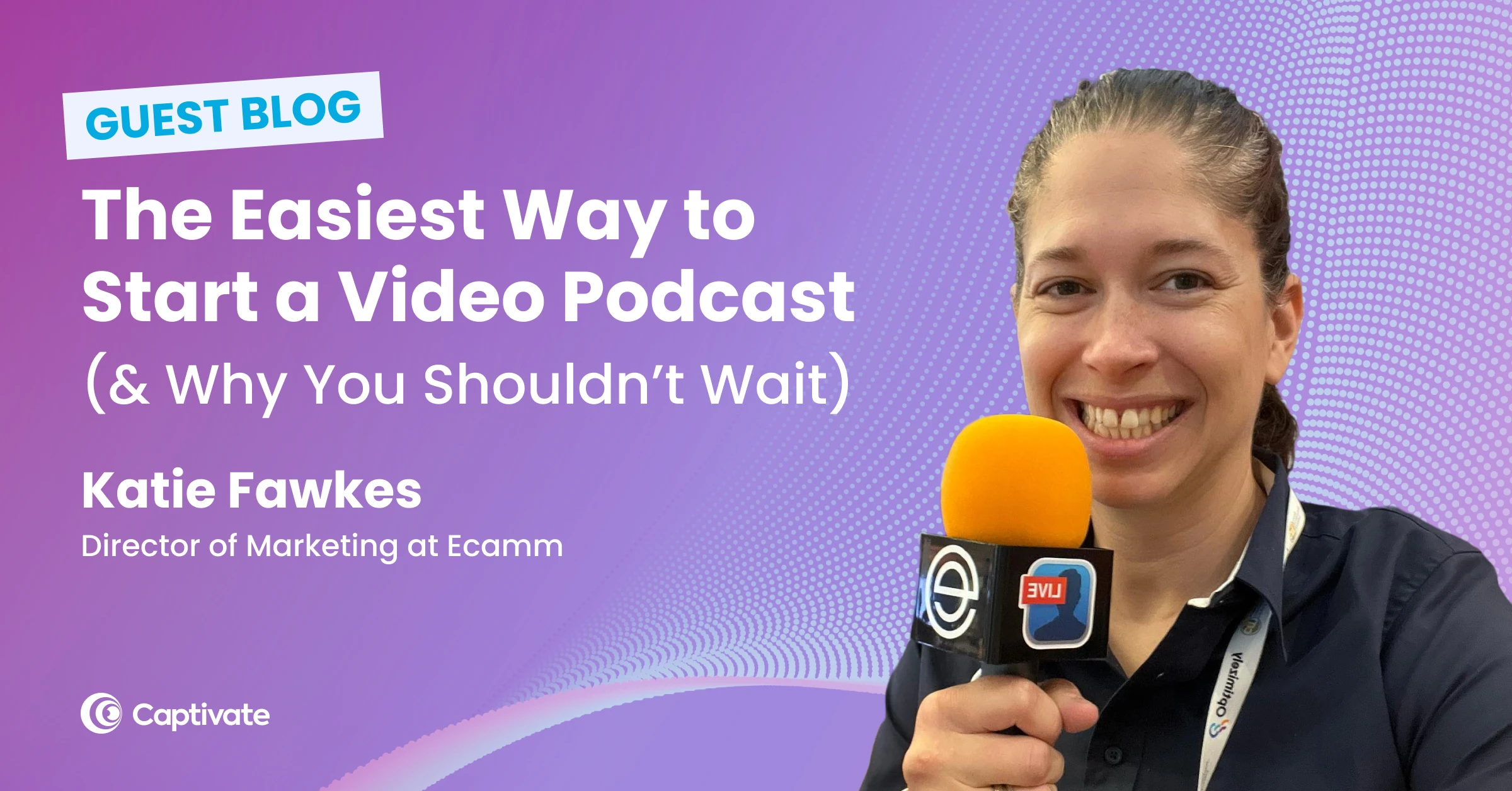This is a guest post from Ana Xavier, podcast content strategist and founder of The Podcast Space.
How do you analyze and track your podcast analytics? This is a very common and important question.
As a podcaster, your ultimate goal is to create meaningful content that resonates with your audience and achieves success on your terms. Whether you use your podcast as a creative outlet, a platform to network with decision-makers, or a way to reach potential clients, understanding your podcast analytics is crucial for growth. In this blog post, we’ll explore how to analyze and track your analytics in your dashboard like a pro and make data-driven decisions to elevate your podcast to new heights.
In this article...
Looking at Podcast Success Beyond Downloads
The first step in understanding your podcast analytics is realizing that success is not solely determined by download numbers. You get to define what success means for your podcast. It could be engaging in meaningful conversations with leaders and legends in your industry, avoiding sales calls (if you don’t enjoy them), or building strong connections with your community. By setting your own success metrics, you empower yourself to focus on the aspects that truly matter to your podcast’s growth and impact.
Downloads numbers CAN become important milestones too, but we want to avoid falling into the trap of the vanity metrics!
Context Matters: Mindset Shift for Small Business Owners and Professionals
When examining your podcast analytics, it’s essential to avoid looking at numbers in isolation. Instead, consider each download as an opportunity to connect with your audience, just like having a conversation in real time – without actually having to repeat yourself ever again! For small business owners and professionals, this mindset shift is transformative. Embrace the value of each listener and focus on building meaningful relationships with them.
Understanding Seasonal Fluctuations to Stay Motivated
Every podcast experiences varying listener engagement throughout the year. During holidays and summers, holding listeners’ attention may be more challenging as routines and habits change. To adapt to these changes, consider adjusting your podcast’s strategy during these periods. Those may include taking breaks for the season, replaying popular episodes, or releasing shorter, more digestible content to keep your audience engaged during these times.
As part of Captivate’s analytics, they include a graph which shows you the last 12 months (plus the current month so far). Consider seasons when looking at the graph, but don’t forget that times like January and October tend to be crowded as a lot of new podcasts are launched into the online space.

As a rule of thumb, most podcasters experience their biggest downloads’ month during their first month of launching – your community is usually very engaged during this phase, but that’s also when podcasters tend to dedicate more time and marketing efforts in promoting the content.
For the upcoming 2-3 month period after that, it’s normal that the numbers drop, as most creators start getting overwhelmed with the week-to-week tasks of running a podcast. That’s why it’s important to batch episodes ahead of time to reduce the chances of podfade (where podcasters start publishing fewer and fewer episodes, until they eventually stop). If you keep feeling overwhelmed after 6 months of launching and your numbers keep declining, it may be time to revisit your podcast processes to match a more realistic approach to the podcaster’s availability and capacity.
Current events can also affect episode consumption, such as global events, PR stunts, and viral content in your industry – listeners’ time is limited, and all these elements can consume the free time they have to listen to shows.
Unpacking Download Numbers and Unique Listeners
Your download numbers may not always correlate directly with the number of unique listeners. Listeners might revisit episodes multiple times or binge-listen, leading to higher download counts. This normally occurs with episodes that follow these models:
- Educational content
- Guides
- Aspirational content
- Inspirational stories
Understand the difference between the two metrics and how they impact your podcast’s growth.
Consider creating what I call ‘super episodes’- episodes that will outperform others over a long period of time, and that will become your audience’s favorites. These tend to include your listeners’ most asked questions, and can become a rather effective tool for your business.
The Power of Shorter/ Micro Episodes
Producing shorter micro episodes can lead to more downloads per month and higher overall engagement. Shorter episodes are also easier to research for, edit, and promote, making them a practical choice for creators seeking growth without compromising content quality. Experiment with different episode lengths and formats to find what resonates best with your audience (and your own routines!) and remember to cross promote other episodes whenever possible. Think about the importance of curating the listener experience as a ‘nice walk through your content’.
Analyzing Audience Location to Educate Marketing Efforts
Knowing where your audience is located can be invaluable for tailoring your podcast’s marketing and content strategy. Look beyond the list of countries and delve into the percentages. Prioritize countries with a significant listener base when planning targeted promotions or considering release schedules to maximize your impact. The growth is on the details!

Episode Performance and Context
Avoid making snap judgments about episode performance based solely on initial download numbers. Consider the context surrounding each episode’s release. Factors such as leveraging your guest’s network and channels, topical relevance, and audience habits after a hiatus can significantly impact an episode’s long-term success. Give episodes time to gain traction before making conclusive judgments.
I’ve worked with clients that saw a 300% increase in downloads after a topic that they covered a few months before became viral. No matter what, don’t delete or hide episodes just because they didn’t perform ‘well’ at the time of release.
Leveraging Multiple Platforms Before Making Big Decisions
Always analyze your podcast’s performance across different platforms, including both audio and video formats if your podcast is also available on YouTube Podcasts, and streaming platforms such as Twitch, LinkedIn or Facebook. An episode that may not resonate on audio platforms might gain traction when presented in video format, or vice versa. By evaluating data from various platforms, you can make strategic content decisions that cater to diverse audience preferences.
‘Did they like this episode?’ Episode Consumption Rates Hold the Answer
Understanding episode consumption rates provides valuable insights into your audience’s behavior. High consumption rates (80% or more) indicate strong engagement and resonate content, while lower rates might suggest a need for more concise, actionable episodes. Episodes with more than 100% consumption rates are fan favorites and serve as a blueprint for creating more successful content, as they are a result of multiple replays). I often get messages from listeners thanking me for the most recent episode, saying that they listened to it no less than 3-5 times because they were taking notes throughout.
One of my new favorite Captivate features is the Daily Trends graph, under the Listener Behavior analytics tab. Why is it quite helpful? Because at a glance, you can infer the ratio of downloads per unique listeners:
- As an example, if there is a minimal difference between unique listeners and download numbers, let’s say 90 unique listeners and 100 download numbers on a specific day, that means that almost every download came from a different listener.
- However, if there is a huge gap between the two, for instance 95 unique listeners and 180 downloads, it’s safe to say that some of those listeners binged through your content, or replayed a few episodes.

Conclusion
Analyzing your podcast analytics like a pro is the key to unlocking your podcast’s growth potential. Embrace a mindset shift that focuses on the quality of connections with your audience rather than just the quantity of downloads. Consider seasonal fluctuations, audience locations, and episode consumption rates to make informed decisions. By using data-driven insights, you can optimize your podcast’s performance, elevate your content, and create an engaging experience for your listeners, ultimately leading to long-term success.
If you feel overwhelmed by understanding all the data, and how to implement actions that will drive podcast growth, you can book a podcast power hour with me. Captivate fans get a 15% discount. Follow The Podcast Space wherever you listen to podcasts.










